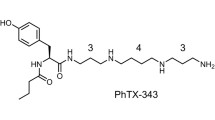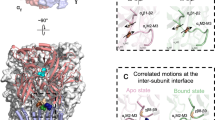Abstract
The blocking action of mecamylamine on different types of nicotinic acetylcholine receptors (nAChRs) has been extensively studied and used as a tool to characterize the nAChRs from different synapses. However, mechanism of mecamylamine action was not fully explored for all types of nAChRs. In the present study, we provide brief description of the mecamylamine action on muscle nAChRs expressed at the frog neuromuscular junction. In this preparation mecamylamine block of nAChRs was accompanied by a use-dependent block relief induced by membrane depolarization combined with the activation of nAChRs by endogenous agonist acetylcholine (ACh). Further, three kinetic models of possible mecamylamine interaction with nAChRs were analyzed including simple open channel block, symmetrical trapping block and asymmetrical trapping block. This analysis suggested that mecamylamine action could be described on the basis of trapping mechanism, when the antagonist remained inside the channel even in the absence of bound agonist. Such receptors with trapped mecamylamine inside were predicted to have a closing rate constant about three times faster than resting one and a fast voltage-dependent unblocking rate constant. Specific experimental conditions and morphological organization of the neuromuscular synapses were considered to simulate time course of the mecamylamine block development. Thus, likewise for the neuronal nAChRs, the trapping mechanism determined the action of mecamylamine on synaptic neuromuscular currents evoked by the endogenous agonist acetylcholine (ACh), however specific morphological organization of the synaptic transmission delayed time development of the currents block.



Similar content being viewed by others
References
Albuquerque EX, Deshpande SS, Kawabuchi M, Aracava Y, Idriss M, Rickett DL, Boyne AF (1985) Multiple actions of anticholinesterase agents on chemosensitive synapses: molecular basis for prophylaxis and treatment of organophosphate poisoning. Fundam Appl Toxicol 5:S182–S203
Anglister L, Stiles JR, Salpeter MM (1994) Acetylcholinesterase density and turnover number at frog neuromuscular junctions, with modeling of their role in synaptic function. Neuron 4:783–794
Ascher P, Large WA, Rang HP (1979) Studies on the mechanism of action of acetylcholine antagonists on rat parasympathetic ganglion cells. J Physiol 295:139–170
Baker CT, Bocharov GA, Paul CA, Rihan FA (1998) Modelling and analysis of time-lags in some basic patterns of cell proliferation. J Math Biol 37:341–371
Benveniste M, Mayer ML (1995) Trapping of glutamate and glycine during open channel block of rat hippocampal neuron NMDA receptors by 9-aminoacridine. J Physiol 483:367–384
Blackman JG, Ray C (1964) Actions of mecamylamine, dimecamine, pempidine and their two quaternary metho-salts at the neuromuscular junction. Br J Pharmacol Chemother 22:56–65
Blanpied TA, Boeckman FA, Aizenman E, Johnson JW (1997) Trapping channel block of NMDA-activated responses by amantadine and memantine. J Neurophysiol 77:309–323
Brammar WJ (1996) Nicotinic acetylcholine-gated integral receptors-channels. In: Conley EC, Brammar WJ (eds) The ion channel FactsBook I: extracellular ligand-gated channels. Academic, London, pp 234–292
Chen HS, Lipton SA (1997) Mechanism of memantine block of NMDA-activated channels in rat retinal ganglion cells: uncompetitive antagonism. J Physiol 499:27–46
Chretien JM, Chauvet GA (1998) An algorithmic method for determining the kinetic system of receptor–channel complexes. Math Biosci 147:227–257
Colquhoun D (1998) Binding, gating, affinity and efficacy: the interpretation of structure–activity relationships for agonists and of the effects of mutating receptors. Br J Pharmacol 125:924–947
Connolly J, Boulter J, Heinemann SF (1992) Alpha 4–2 beta 2 and other nicotinic acetylcholine receptor subtypes as targets of psychoactive and addictive drugs. Br J Pharmacol 105:657–666
Corringer PJ, Novere N le, Changeux JP (2000) Nicotinic receptors at the amino acid level. Annu Rev Pharmacol Toxicol 40:431–458
Dilmore JG, Johnson JW (1998) Open channel block and alteration of N-methyl-d-aspartic acid receptor gating by an analog of phencyclidine. Biophys J 75:1801–1816
Dingledine R, Borges K, Bowie D, Traynelis SF (1999) The glutamate receptor ion channels. Pharmacol Rev 51:7–61
Dorrscheidt-Kafer M (1981) Comparison of the action of La3+ and Ca2+ on contraction threshold and other membrane parameters of frog skeletal muscle. J Membr Biol 62:95–103
Fieber LA, Adams DJ (1991) Acetylcholine-evoked currents in cultured neurones dissociated from rat parasympathetic cardiac ganglia. J Physiol 434:215–237
Friboulet A, Thomas D (1993) Reaction–diffusion coupling in a structured system: application to the quantitative simulation of endplate currents. J Theor Biol 160:441–455
Frishman WH, Mitta W, Kupersmith A, Ky T (2006) Nicotine and non-nicotine smoking cessation pharmacotherapies. Cardiol Rev 14:57–73
Giniatullin RA, Khamitov G, Khazipov R, Magazanik LG, Nikolsky EE, Snetkov VA, Vyskocil F (1989) Development of desensitization during repetitive end-plate activity and single end-plate currents in frog muscle. J Physiol 412:113–122
Giniatullin RA, Sokolova EM, Angelantonio S di, Skorinkin A, Talantova MV, Nistri A (2000) Rapid relief of block by mecamylamine of neuronal nicotinic acetylcholine receptors of rat chromaffin cells in vitro: an electrophysiological and modeling study. Mol Pharmacol 58:778–787
Giniatullin R, Nistri A, Yakel JL (2005) Desensitization of nicotinic ACh receptors: shaping cholinergic signaling. Trends Neurosci 28:371–378
Gurney AM, Rang HP (1984) The channel-blocking action of methonium compounds on rat submandibular ganglion cells. Br J Pharmacol 82:623–642
Kalamida D, Poulas K, Avramopoulou V, Fostieri E, Lagoumintzis G, Lazaridis K, Sideri A, Zouridakis M, Tzartos SJ (2007) Muscle and neuronal nicotinic acetylcholine receptors. Structure, function and pathogenicity. FEBS 274:3799–3845
Knisley SB, Smith WM, Ideker RE (1994) Prolongation and shortening of action potentials by electrical shocks in frog ventricular muscle. Am J Physiol 266:H2348–H2358
Lambert JJ, Durant NN, Reynolds LS, Volle RL, Henderson EG (1981) Characterization of end-plate conductance in transected frog muscle: modification by drugs. J Pharmacol Exp Ther 216:62–69
Lingle C (1983a) Blockade of cholinergic channels by chlorisondamine on a crustacean muscle. J Physiol 339:395–417
Lingle C (1983b) Different types of blockade of crustacean acetylcholine-induced currents. J Physiol 339:419–437
Maconochie DJ, Knight DE (1992) Markov modelling of ensemble current relaxations: bovine adrenal nicotinic receptor currents analysed. J Physiol 454:155–182
Magleby KL, Pallotta BS (1981) A study of desensitization of acetylcholine receptors using nerve-released transmitter in the frog. J Physiol 316:225–250
Magleby KL, Stevens CF (1972) The effect of voltage on the time course of end-plate currents. J Physiol 223:151–171
Mathie A, Colquhoun D, Cull-Candy SG (1990) Rectification of currents activated by nicotinic acetylcholine receptors in rat sympathetic ganglion neurones. J Physiol 427:625–655
Naves LA, van der Kloot W (2001) Repetitive nerve stimulation decreases the acetylcholine content of quanta at the frog neuromuscular junction. J Physiol 532:637–647
Neely A, Lingle CJ (1986) Trapping of an open-channel blocker at the frog neuromuscular acetylcholine channel. Biophys J 50:981–986
Nooney JM, Peters JA, Lambert JJ (1992) A patch clamp study of the nicotinic acetylcholine receptor of bovine adrenomedullary chromaffin cells in culture. J Physiol 455:503–527
Papke RL, Sanberg PR, Shytle RD (2001) Analysis of mecamylamine stereoisomers on human nicotinic receptor subtypes. J Pharmacol Exp Ther 297:646–656
Parnas H, Flashner M, Spira ME (1989) Sequential model to describe the nicotinic synaptic current. Biophys J 55:875–884
Pawson PA, Grinnell AD, Wolowske B (1998) Quantitative freeze-fracture analysis of the frog neuromuscular junction synapse—I. Naturally occurring variability in active zone structure. J Neurocytol 27:361–377
Pryaznikov EG, Skorinkin AI, Garaev RS, Giniatullin RA (2002) The mechanism of dimephosphone action on neuromuscular junction. Neirofiziologiya/Neurophysiology 34:361–366
Pryaznikov EG, Skorinkin AI, Garaev RS, Giniatullin RA, Visel AO, Shukina LI (2005) The mechanisms of the action of oxaphospholene derivatives on neuromuscular junction. Bull Exp Biol Med 139:432–435
Riemer TL, Sobie EA, Tung L (1998) Stretch-induced changes in arrhythmogenesis and excitability in experimentally based heart cell models. Am J Physiol 275:H431–H442
Schnoll RA, Lerman C (2006) Current and emerging pharmacotherapies for treating tobacco dependence. Expert Opin Emerg Drugs 11:429–444
Shen WX, Horn JP (1998) Mecamylamine selectively blocks nicotinic receptors on vasomotor sympathetic C neurons. Brain Res 788:118–124
Shytle RD, Penny E, Silver AA, Goldman J, Sanberg PR (2002) Mecamylamine (Inversine): an old antihypertensive with new research directions. J Hum Hypertens 16:453–457
Skorinkin AI (2005) The action of ganglioblocker mecamylamine on the rat’s ionotropic muscular cholinoreceptors. Neirofiziologiya/Neurophysiology 37:217–222
Skorinkin AI, Shaikhutdinova AR (2004) Reconstruction of dynamics of change in the acetylcholine concentration in the synaptic cleft upon signal-quantum signal. Biofizika 49: 872–876
Skorinkin AI, Ostroumov KB, Shaikhutdinova AR, Giniatullin RA (2004) Trapping blockage of muscle nicotinic cholinoreceptors by mecamylamine. Dokl Biol Sci 399:464–466
Stiles JR, Kovyazina IV, Salpeter EE, Salpeter MED MER (1999) The temperature sensitivity of miniature endplate currents is mostly governed by channel gating: evidence from optimized recordings and Monte Carlo simulations. Biophys J 77:1177–1187
Stiles JR, van Helden D, Bartol TM jr, Salpeter EE, Salpeter MM (1996) Miniature endplate current rise times less than 100 microseconds from improved dual recordings can be modeled with passive acetylcholine diffusion from a synaptic vesicle. Proc Natl Acad Sci 93:5747–5752
Varanda WA, Aracava Y, Sherby SM, Vanmeter WG, Eldefrawi ME, Albuquerque EX (1985) The acetylcholine receptor of the neuromuscular junction recognizes mecamylamine as a noncompetitive antagonist. Mol Pharmacol 28:128–137
Vargas-Caballero M, Robinson HP (2004) Fast and slow voltage-dependent dynamics of magnesium block in the NMDA receptor: the asymmetric trapping block model. J Neurosci 24:6171–6180
Wathey JC, Nass MM, Lester HA (1979) Numerical reconstruction of the quantal event at nicotinic synapses. Biophys J 27:145–164
Acknowledgments
We thank Prof. A. Nistri and Prof. R. Giniatullin for comments and suggestions during writing of this manuscript. Asya Shaikhutdinova and Andrey Skorinkin would like to thank the Russian Foundation for Basic Research and the Russian government for a Leading Scientific School grant.
Author information
Authors and Affiliations
Corresponding author
Rights and permissions
About this article
Cite this article
Ostroumov, K., Shaikhutdinova, A. & Skorinkin, A. Modeling study of mecamylamine block of muscle type acetylcholine receptors. Eur Biophys J 37, 393–402 (2008). https://doi.org/10.1007/s00249-007-0224-5
Received:
Revised:
Accepted:
Published:
Issue Date:
DOI: https://doi.org/10.1007/s00249-007-0224-5




